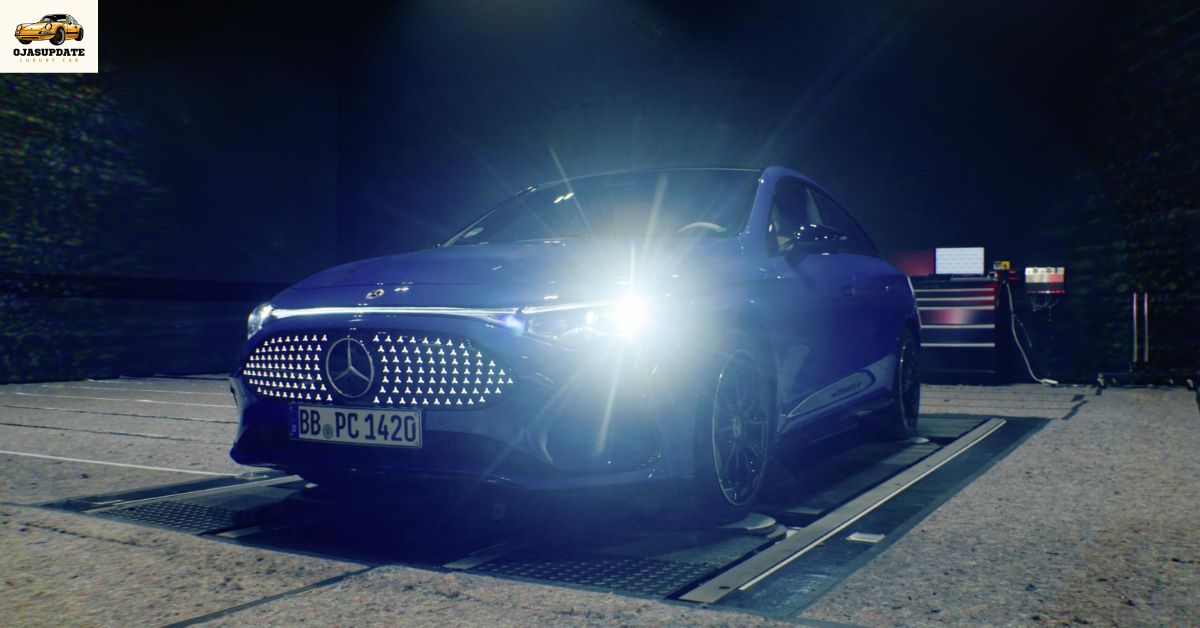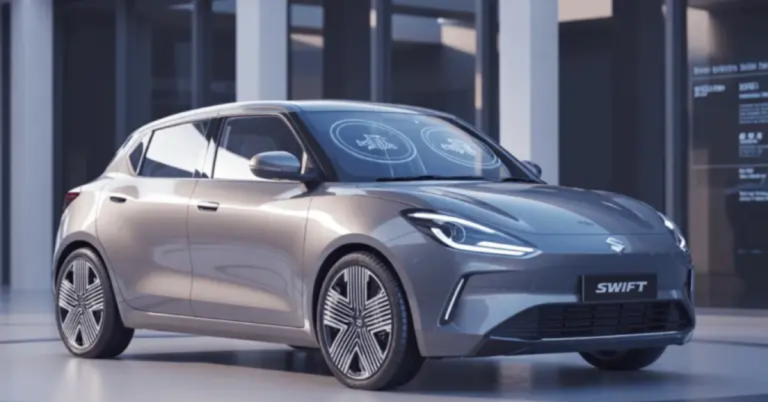
Mercedes-Benz has once again raised the bar in automotive innovation with the opening of its state-of-the-art Light Testing Center at the Global Proving Ground in Immendingen, Germany. This massive facility, one of the most advanced in the automotive industry, is designed to revolutionize how lighting systems are developed, tested, and perfected—ushering in a new era of safety, precision, and technological excellence.
A Facility Like No Other
Spanning 135 meters in length and 8 meters in height, the Light Testing Center is engineered to simulate real-world driving conditions with unmatched accuracy. Inside, Mercedes-Benz has recreated a full-scale country road, complete with specially formulated asphalt that mimics the reflective properties of aged pavement. This allows engineers to test headlight performance under conditions that replicate actual night driving—without being limited by weather, daylight, or seasonal changes.
The facility can accommodate up to five vehicles simultaneously, enabling parallel testing of various lighting systems. Engineers can simulate oncoming traffic, vehicles ahead, and even pedestrians, using strategically placed dummies and reflector posts spaced every 20 meters. This setup ensures that lighting systems—such as adaptive high beams, LED matrix lights, and intelligent headlamps—are evaluated under consistent, reproducible conditions.
Precision Meets Sustainability
The Light Testing Center is more than just a technical marvel—it’s a symbol of Mercedes-Benz’s commitment to sustainable and efficient vehicle development. By moving nearly 80% of real-world lighting tests indoors, the company reduces its environmental footprint while accelerating innovation. Engineers can now conduct tests 24/7, regardless of external conditions, leading to faster development cycles and more reliable results.
The facility is part of a broader investment in Immendingen, which has become a global hub for Mercedes-Benz’s research and development. With over €400 million invested and more than 30,000 test vehicles clocking 100 million kilometers since its launch, Immendingen is a testament to the brand’s forward-thinking approach.
The Heide Durability Circuit: Robots Take the Wheel
Adjacent to the Light Testing Center is another groundbreaking innovation—the Heide durability circuit. This rough-road track is designed to simulate 300,000 kilometers of real-world driving in just 6,000 kilometers. The secret? Automated driving robots that steer test vehicles over potholes, cobblestones, and bumps with unrelenting precision.
Unlike human drivers, these robots don’t tire, allowing for continuous 24/7 testing. Each maneuver is executed with exact consistency, ensuring that every vehicle undergoes the same stress tests. This not only improves the accuracy of durability assessments but also frees up human engineers to focus on analysis and design.
The circuit is named after the Lüneburg Heath, a notoriously rough terrain used for testing since the 1950s. Today, it’s been digitized into a “digital twin”, allowing engineers to simulate hundreds of chassis setups virtually before building physical prototypes.
Digitization and Real-World Simulation
The Immendingen proving ground covers 520 hectares and includes 86 kilometers of diverse tracks, replicating everything from mountain passes with 180 meters of elevation change to complex city intersections and high-speed highways. The facility can simulate rain, bright sunlight, and Arctic-level lighting, making it one of the most versatile testing environments in the world.
This digitization enables Mercedes-Benz to conduct virtual simulations alongside physical tests, creating a seamless feedback loop that enhances vehicle development. Engineers can test lighting systems, chassis durability, and safety features in both real and virtual environments—ensuring that every component meets the highest standards before reaching production.
A Vision for Safer Roads
Mercedes-Benz’s investment in advanced testing infrastructure reflects its broader mission: to make driving safer, smarter, and more sustainable. Lighting systems play a crucial role in road safety, especially in low-visibility conditions. By perfecting these systems in a controlled environment, the company ensures that its vehicles offer optimal visibility, minimal glare, and maximum responsiveness to changing conditions.
The Light Testing Center also supports the development of autonomous driving technologies, where precise lighting and sensor integration are critical. As vehicles become more intelligent, the need for flawless interaction between lighting, cameras, and radar systems becomes paramount—and Immendingen is where that future is being built.
Final Thoughts: Engineering Excellence in Action
The opening of Mercedes-Benz’s Light Testing Center is more than a milestone—it’s a glimpse into the future of automotive engineering. By combining physical realism, digital precision, and robotic automation, the facility sets a new standard for how vehicles are tested and refined.
For drivers, this means safer night journeys, smarter headlights, and vehicles that perform flawlessly in every condition. For the industry, it’s a challenge to innovate, adapt, and evolve. And for Mercedes-Benz, it’s another step toward a future where luxury, safety, and sustainability go hand in hand.



